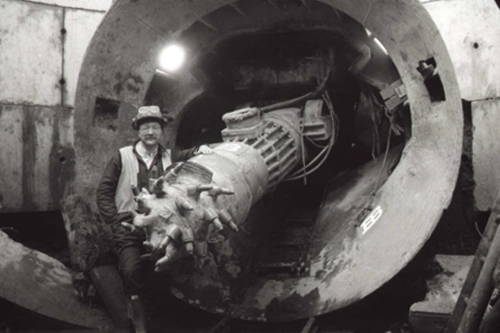Sewer rehabilitation great Britton steps into retirement
After nearly five decades carrying out some of the most pioneering work in the water industry below ground, Julian Britton is looking forward to chalking up some notable achievements above it following his well-earned retirement this month.
Julian, 65, has called time on his most recent role - as Wessex Water’s Sewer Rehabilitation Programme Manager - and now plans to spend time walking the South West Coastal path in preparation for a trek along part of the ‘Camino de Santiago’ through northern Spain.

He leaves behind an extensive and award-winning body of work that has contributed to major progress and innovation within the water industry since he was first employed by Bristol Water Works in 1978 and began six years at college studying civil engineering.
Joining Wessex Water’s critical sewers team in 2004, he had already worked on some of the company’s important projects during the preceding two decades.
And for the past 20 years, he has been at the forefront some of the company’s most innovative and industry-leading work, specialising in cured-in-place pipe lining and trenchless and ‘no-dig’ repairs of the sewer system.
Working on some of the biggest tunnelling schemes across the region, he was a key figure on the Bristol Regional Tunnelling Scheme in the 1980s, where he initially sunk more than 70 boreholes up to 100 metres deep along the tunnel route for the Northern Foul Water Interceptor.

As well as designing another 3,000-metre phase of the project, he also took charge of the tunnel drives in the early 1990s, working in dangerous underground environments.
"All communication on the tunnelling machine was by flashing coloured lights, as the noise levels were very high and we wore ear defenders,’’ he recalled.
"The rock was high in silica dust so we had breathing apparatus and goggles. The temperature from the tunnel machine generator meant a constant 40 to 50-degree heat, so every day was an aggressive day in the ‘office’.
"But we were all working for the same goal, miners, engineers, and surveyors, and the camaraderie was at the max.
"In the end I became the custodian of the history of the Bristol Regional Drainage Scheme 1878 -1994 and, in 2010, all of the information was recorded in the new M Shed Museum on the docks in Bristol, and I became known as ‘The Last Engineer’."
While working for friends’ engineering design company in the 1990s, he broadened his experience on projects such as bioremediation extraction of oil from contaminated ground in Nigeria, the design of helicopter landing pads in Devon, refurbishment of the dam on the Papermill at Wookey Caves, new car parks at Sandhurst Military Academy and designing tunnel drop shafts at South West Water, Plymouth.
Moving on to Wessex Water’s Weston-super-Mare tunnel scheme until 1997, he went on to work on projects at Bristol Airport before taking up the critical sewers team role with the water company.
In the two decades since, he has continued to drive the innovative methods employed by Wessex Water’s sewer rehabilitation team, including the use of trenchless technology and autonomous robotic surveying of pipes in dangerous conditions underground, as well as mentoring engineers who have gone on to pass their expertise around the world.
It brought recognition such as the International Society of Trenchless Technology’s ‘World Innovation Award’ in Rome in 2007 and multiple accolades for his young engineers from the United Kingdom Society for Trenchless Technology (UKSTT).
He added:"The concepts around ‘Trenchless and No Dig’ are always changing and there is so much opportunity to innovate and invent, and once you have honed your skills and knowledge it is a niche area of civil engineering and you are not constrained, let your imagination explore."

